There are few vegetables as widely loved and easy to use as lettuce. However, growing lettuce isn’t always as easy as eating it.
Hot and cold temperatures, heavy rains, and poor soil have led some people to explore growing lettuce hydroponically. This method involves growing lettuce in a nutrient solution rather than in the ground.
As you might expect, you’ll need to provide these lettuce plants with the proper blend of nutrients if you want to harvest crisp and refreshing leaves.
I will provide information about the type and amount of nutrients hydroponic lettuce needs and suggest a few hydroponic lettuce fertilizers for you to try out.
What Nutrients Does Hydroponic Lettuce Need?
Hydroponic lettuce needs the same nutrients as soil-grown lettuce. That’s because even if a plant’s environment differs, its nutrient needs remain unchanged.
One crucial group of nutrients is the macronutrients nitrogen (N), phosphorus (P), and potassium (K). Nitrogen aids in leaf development and overall growth, while phosphorus promotes root development and flower production. Potassium enhances plant vigor and disease resistance.
In addition to macronutrients, lettuce also needs the secondary macronutrients calcium (Ca), magnesium (Mg), and sulfur (S). Calcium contributes to cell wall strength and prevents disorders like tip burn, while magnesium is essential for chlorophyll production and photosynthesis. Sulfur is involved in protein synthesis and enzyme activity.
While micronutrients are needed in smaller doses, they’re also important for the production of hydroponic lettuce and help with processes like enzyme activation and election transport. Micronutrients include iron (Fe), manganese (Mn), zinc (Zn), copper (Cu), molybdenum (Mo), boron (B), and chlorine (Cl).
It’s true that lettuce will grow without access to all of the above nutrients. However, you’ll want to supply your hydroponic lettuce plants with as many nutrients as possible if you want them to thrive.
So, how much of each nutrient should you apply?
Hydroponic lettuce requires a large amount of nitrogen and potassium, followed by a moderate amount of calcium, and a smaller amount of magnesium, phosphorus, and sulfur. It requires trace amounts of iron, manganese, zinc, copper, boron, and molybdenum.
The Proper Electrical Conductivity and pH for Hydroponic Lettuce
When you grow lettuce in the soil, you’re concerned about pH. However, when you grow lettuce hydroponically, you’ll need to be concerned with the pH as well as the electrical conductivity of the solution, which is the measurement of dissolved salts in the hydroponic solution.
In simple terms, the EC measures the strength of the nutrient solution. A high EC equates with a strong nutrient solution, while a weak nutrient solution.
Maintaining an appropriate electrical conductivity (EC) and pH levels is vital for optimum nutrient uptake and plant health. Even if you are using the proper nutrient blend, an out of balance pH or EC can lead to unhealthy plants.
The ideal pH and EC for hydroponic lettuce varies a bit depending on the type of lettuce as well Lettuce generally thrives within an EC range of 1.0-2.0 mS/cm, with variations at different growth stages. One study showed that a nutrient solution with an EC of 2.0 mS/cm produced the largest lettuce heads.
For lettuce, maintaining a pH range of 5.6-6.0 is ideal.
Low EC, which equates to low soluble salts and often low levels of nutrients, can cause yellow leaves in green lettuce varieties and purple leaves in red lettuce varieties. So if you find your lettuce looking less than ideal, check up on the EC of your nutrient solution!
How to Measure the Electrical Conductivity of Your Hydroponic Solution
Fortunately, it’s easy to measure the EC of your hydroponic solution! All you need is an EC meter and basic know-how.
Here’s a step-by-step guide on how to measure the electrical conductivity of a solution for your home hydroponic setup:
- Purchase an EC meter: Look for a meter designed for measuring electrical conductivity in liquids. These meters are widely available at hydroponic supply stores or online. I like this one.
- Calibration: Properly calibrating your meter is a key step in obtaining accurate measurements. Most EC meters come with calibration solutions of known electrical conductivity. Follow the instructions provided with your specific meter to calibrate.
- Prepare the solution: Take a sample of the solution you want to measure. If you are testing your hydroponic nutrient solution, collect a small amount of the solution from the reservoir.
- Rinse the EC meter: Rinse the EC meter probe with clean water to remove any residue or contaminants from the previous measurement.
- Insert the probe: Gently insert the EC meter probe into the solution sample. Ensure that the electrodes on the probe are fully submerged in solution but make sure they’re not touching the sides or bottom of the container since this can affect the accuracy of the measurement.
- Allow time for stabilization: Give the EC meter a few seconds to provide a consistent reading. The reading on the meter may fluctuate initially but should eventually stabilize.
- Read the measurement: Once the EC meter stabilizes, read the electrical conductivity value displayed on the meter. It is typically expressed in units of microsiemens per centimeter (µS/cm) or millisiemens per centimeter (mS/cm).
- Clean the probe: After each measurement, rinse the EC meter probe with clean water to remove any residue and prevent cross-contamination.
Remember, electrical conductivity is just one factor to consider in hydroponics. It’s essential to maintain the appropriate nutrient levels for optimal plant growth. Regularly monitor and adjust your nutrient solution based on the electrical conductivity measurements, as well as the specific nutrient requirements of your plants.
Does the Growing Media and System Impact Nutrient Needs?
While all hydroponic lettuce is grown using soilless media and a nutrient solution, many different hydroponic systems exist. Some common systems used for hydroponic lettuce include nutrient film technique (NFT), deep water culture (DWC), and ebb and flow.
In a nutrient film technique system, lettuce sits in a cup in a tray. A nutrient solution continuously flows down the tray and over the plants’ roots so the roots don’t sit in the solution.
Deep water culture involves placing lettuce plants in cups filled with soilless media like coco coir, perlite, or pumice. These cups then sit in a nutrient solution.
The ebb and flow is also called a flood and drain system. That’s because the plants sit in cups tucked inside a container that you continuously flood with nutrient solution and then drain.
While these systems influence the strength of a nutrient solution, they do not impact the nutrients that lettuce plants need. All hydroponically grown lettuce needs nitrogen, phosphorus, potassium, calcium, sulfur, magnesium, and various macronutrients.
Types of Hydroponic Lettuce Fertilizers
When it comes to selecting fertilizers for hydroponic lettuce, you’ll have to make a decision in two main categories. Do you want an organic or synthetic source of nutrients? And do you prefer a liquid or solid product?
Organic nutrients are derived from natural sources such as animal waste, rock dust, and plants. These materials tend to be lower in nutrients than synthetic fertilizers. Additionally, the nutrient compounds in the products may need to be converted by bacteria before plants can absorb them.
Synthetic fertilizers are synthesized in a lab. They are typically water-soluble and can exist in higher nutrient concentrations than organic fertilizers.
As to whether to use organic or synthetic fertilizers? The choice is yours. If you want to grow organic lettuce, you’ll need to use organic fertilizers. However, you can use synthetic nutrients if you’re not concerned with organics.
The next decision you’ll need to make is whether you want to use liquid or solid nutrients. Both products can supply your lettuce with the necessary nutrients, so it’s ultimately a matter of personal preference.
However, if you go with a solid fertilizer, you’ll need to ensure the materials are water-soluble. If they’re not, the lettuce plants won’t be able to absorb the nutrients properly.
The Best Fertilizers for Hydroponic Lettuce
Now that you know a bit more about the nutrients that hydroponic lettuce requires, you’ll need to find a fertilizer that supplies your plants with these nutrients. Although I believe the following products can produce great results, there are also many other fertilizers that can work well for hydroponic lettuce.
1. General Hydroponics MaxiGro Plant Food

This is one of my top recommendations for fertilizer for hydroponic lettuce. It’s a synthetic powdered product that’s readily available through the General Hydroponics website and online retailers like Amazon.
MaxiGro was developed to support the development and growth of vegetative tissue. And since you grow lettuce for its leaves, MaxiGrow is a great fit.
The fertilizer contains a wide spectrum of nutrients, including all primary and secondary nutrients and the micronutrients iron and manganese.
Not only does it supply plants with all these nutrients, but it also provides the correct ratios. This is especially important since the ratio of nutrients is just as important as the presence of any nutrients at all.
Mixing a homogenous nutrient solution is simple due to the water-soluble granules. Just add the appropriate amount of fertilizer to the water and mix.
Product instructions recommend applying one to two teaspoons per gallon of water. I recommend starting with one teaspoon, testing the EC, and then adding more granules if necessary.
MaxiGro plant food is also available in a variety of sizes. You can order two pounds if you have a small home hydroponic setup or want to test the product. However, if you’re operating a large operation, you can purchase a 16 or 50-pound bag.
One thing to note is that MaxiGro doesn’t contain any sulfur nor some of the micronutrients. Many growers report this isn’t a problem, but you can supplement with a sulfur fertilizer if you’re concerned.
2. Fafagrass Liquid Plant Food
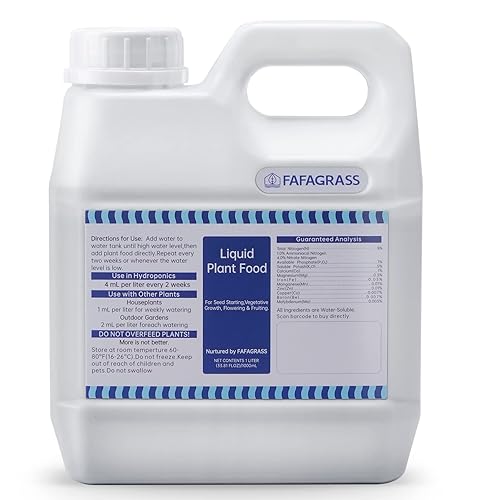
This liquid plant food is a good option if you prefer a liquid fertilizer for your hydroponic lettuce. It provides many of the same nutrients as MaxiGro, but the ratios are a bit different.
The nutrient composition consists of 5% nitrogen and potassium and 1% phosphorus and calcium. This is in line with a lettuce plant’s nutrient needs.
I also like that this fertilizer contains smaller amounts of magnesium, iron, manganese, zinc, copper, boron, and molybdenum.
The liquid form makes this fertilizer very easy to mix into water. Just pour the recommended amount into the water and mix well.
As I’ve mentioned before, you should test the EC of your nutrient solution and use this as a guide for how many nutrients to add. However, you can start with the recommendation of four milliliters of fertilizer per liter of water.
Past customers have reported that this fertilizer works well for growing lettuce using the Kratky method, which forgoes the use of air pumps and airstones.
Although the one-liter container may not seem very big, remember that you’ll only need a few milliliters of product per every liter of hydroponic nutrient solution.
Frequently Asked Questions
Does Hydroponic Lettuce Need Fertilizer?
Yes, hydroponic lettuce needs fertilizer! Although lettuce seeds can germinate without nutrients, they require fertilizer for healthy growth. You should choose a fertilizer that contains nutrients including nitrogen, potassium, phosphorus, calcium, and magnesium.
What Nutrients Do Hydroponic Lettuce Plants Need?
Hydroponic lettuce needs nitrogen, potassium, phosphorus, calcium, and magnesium to grow. It will also benefit from smaller amounts of manganese, iron, zinc, boron, and sulfur.
What Is the Fertilizer Ratio for Hydroponic Lettuce?
The ratio of fertilizer to water depends on the strength of your fertilizer. However, you should aim to create a nutrient solution with an electrical conductivity (EC) between 1.0 and 2.0 mS/cm.
What Is the White Stuff on My Hydroponic Lettuce?
Lettuce sometimes becomes coated with a fungus known as powdery mildew. This disease is most likely to occur in humid conditions with little airflow.
If you notice powdery mildew, you can spray your plants with a fungicide or a mixture of one tablespoon of baking soda per gallon of water. You should also try to increase airflow and decrease humidity to prevent the spread and reemergence of the disease.
Wrapping Up
Choosing the proper fertilizer is key if you hope to grow lettuce using hydroponic methods. Look for a water-soluble fertilizer containing nitrogen, potassium, phosphorus, calcium, and magnesium, and apply it until you have a nutrient solution with an EC between 1.0 and 2.0 mS/cm.
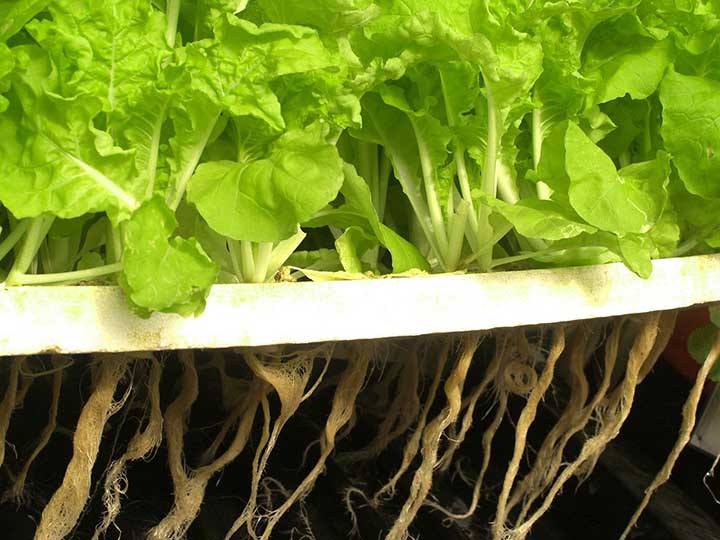
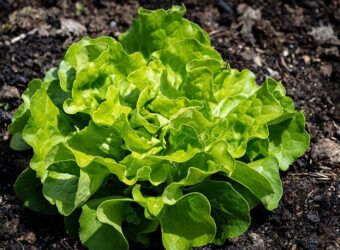
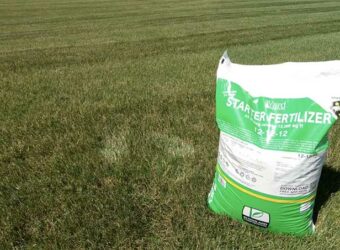
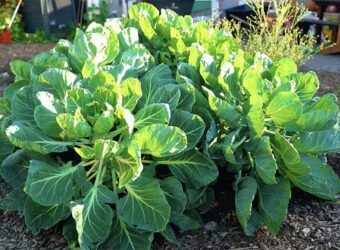

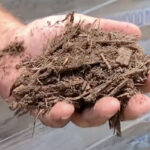

Great info, thanks for posting, We have a Lettuce Grow Farmstand (Aeroponics) aboard our live-aboard Sailing Vessel, 36 plants in a very small area, Love it